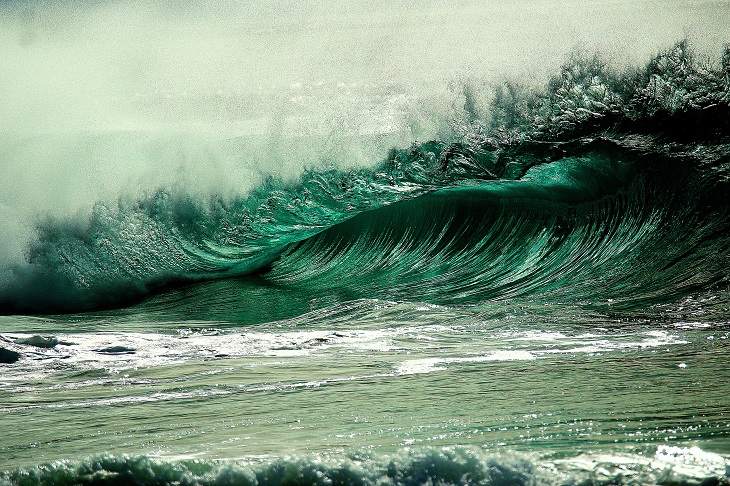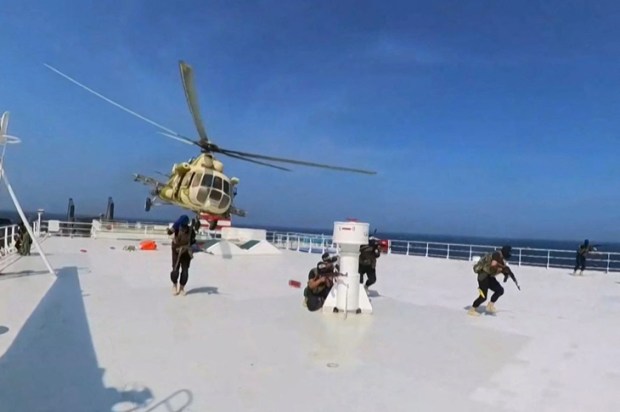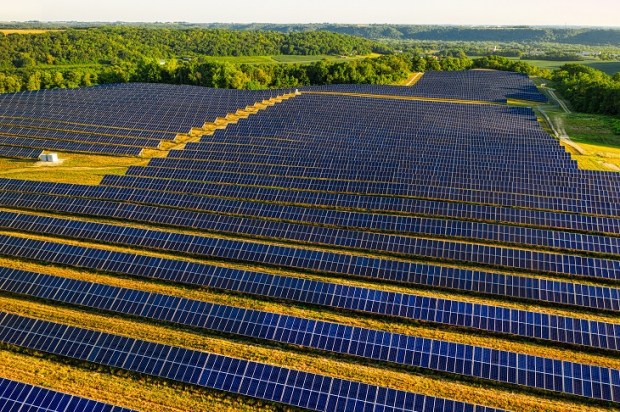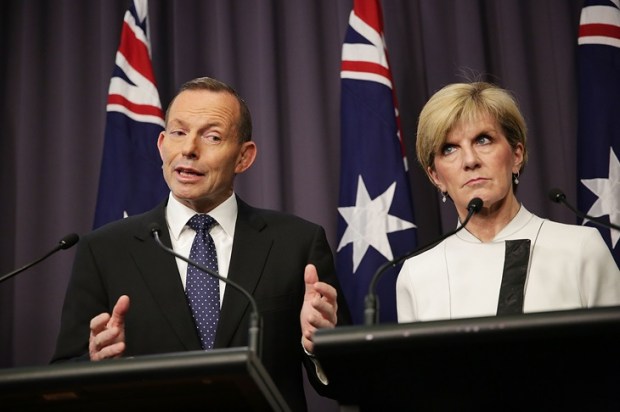Every year, there is a green fad that claims it’s going to ‘save the world’ with some kind of renewable gimmick. In 2023, it’s the doomed money pit of green hydrogen – at the turn of the millennium, it was wave energy.
Established in 1997, Oceanlinx focused on ocean-based renewable energy harvesting, particularly its Wave Energy Converter (WEC). In 1999, the federal government, under Howard, gave the company a grant of $750,000 to pursue WEC technology before a second grant of $1.21 million was issued for research and development.
Wave energy is simple enough on paper. The kinetic energy of wave motion is converted into electrical energy in a variety of ways and – considering wave and tidal movement is driven by the motion of the Earth, Sun, and Moon – it is considered inexhaustible and reliable.
There were (and still are) great hopes that a combination of wave and tidal technology can break nations out of their dependence on fossil fuels, particularly as oil and gas are often sourced from geopolitically unstable regions and transported under China’s controlled territories. Australia has no such need and is driven to these projects for domestic political reasons.
Despite theoretical potential, wave energy has become the orphan child of the renewable world. Even the International Energy Agency admits in its Ocean Power tracking report that wave and tidal energy are out of the race for the United Nation’s 2050 Net Zero goals.
Australia has been part of this story of failure.
The first trial of Oceanlinx’s prototype, greenWAVE MK1 – a very small near-shore generator in Pork Kembla, New South Wales – was partially successful in that it operated between 2005-09. It lays claim to being one of the first full-scale wave generators in the world. However, MK1 ended up as a piece of half-sunk and rusted wreckage following its decomission and the eventual collapse of Oceanlinx.
The blueWAVE MK3 prototype was installed as a deep water project and connected to the grid in 2010 with the hope it would produce 2.5MW of electricity – improving the state’s green image. It was not to be. MK3 snapped out of its moorings due to bad weather before slipping partially beneath the waves of the eastern breakwater where it was left to decay. Another blight on the Australian landscape.
Building renewable energy prototypes is a lot easier than removing them, with these wave energy wrecks languishing for years to be bickered over by private companies, local councils, and government departments.
Eventually the Roads and Maritime Services body floated the idea that it intended to sue Oceanlinx over its failure to clean up MK3. This prompted the company to drag MK3 off the breakwater and then – uh – dumped it 50 miles offshore in 2017.
So there you have it, instead of renewable energy saving the planet – another piece of expensive junk was left to rot in the ocean.
The trouble with wave energy is that it is plentiful but chaotic, with WECs forced to operate in environments that are hazardous to technology. Wave energy machines are routinely butchered by these conditions, just as offshore wind turbines are blunted by relentless salt spray.
Undeterred, Oceanlinx had another go in 2012 with greenWAVE. This time, Australian taxpayers fronted around $4.4 million via the Australian Renewable Energy Agency as part of the Emerging Renewables Program – a pair of entities that deserve closer scrutiny regarding the potential waste of public money.
The structure built by Oceanlinx was 3,000 tonnes measuring 21m wide and 24m long. In 2014 it was meant to be installed at Port Macdonnell in South Australia to power 1,000 homes. Suffice to say, its failure was even worse than MK3.
GreenWAVE’s structure was damaged by the towing process, leaving it on a nasty tilt in shallow water before it partially sank.
Six years later, in 2020, furious local residents were begging the South Australian government to remove the dangerous eyesore – something you’d think green-conscious governments wouldn’t have to be bullied into doing.
To be fair, the then-Liberal government in South Australia pledged to end Labor’s portfolio of green failures, but the reality of their leadership was just as wasteful and indulgent as Labor. Any move to cut renewable projects resulted in the press hounding the Premier and his team as climate criminals which led to a situation where green projects lacked proper public scrutiny and an arms race of ‘virtue’ was established between political leaders.
In 2018, stories were run that tried to soften the fury of residents who were told that the piece of worthless concrete and steel sticking out the water in their bay would be converted into an artificial reef. Out of sight, out of mind? This news left the local mayor scrambling to placate fishermen and boat users, assuring them that they weren’t going to hit the submerged structure.
By this point, about the only thing the greenWAVE project appeared to be good for was as an unattractive perch for seabirds perusing the waves for aquatic snacks.
As the Yankalilla Mayor, Glen Rowlands, said at the time: ‘They certainly don’t see it as something that beautifies their outlook across the sea.’ He rightly added, ‘Council’s approach was we would like it cut down and totally removed, and when I say removed [I mean] brought to shore and transported away. But that would have been an extremely expensive exercise.’
Then came the unpopular remark from the South Australian Infrastructure Minister, Stephan Knoll – who didn’t have to look at the ugly renewable wreck every day. He said, ‘We took the decision that the best approach was to get rid of the eyesore above the water, keep the structure that’s below the water for fish and other marine life, and then make sure the appropriate safety beacons are in place.’
No doubt, this is the fate that awaits tens of thousands of rotting offshore wind turbines and their enormous underwater structures that can be over 60m tall. Australia has 50 offshore wind farm projects. That’s a lot of steel and concrete in our shallow waters.
Removal of the greenWAVE structure was further complicated by litigation. According to the ABC, a spokesperson for the Oceanlinx liquidator said that there were insufficient funds in the company ‘to allow for the remediation or removal of the wave generator’ leading the company to ‘disclaim all right so the unit’.
Why hasn’t the Minister for Climate Change bothered to talk about the extraordinary amount of steel and concrete renewable energy has left in the ocean – be it in wave or wind technology? Ministers worry about plastic bags entering the ocean, but not steel, concrete, oil, and other metals that leech into the fragile ecosystem over time.
Residents wanted this piece of junk, partly funded by the government, removed from their pristine environment. A sensible political party concerned with environmental causes, as the former Liberal Party in South Australia claimed to be, would have coughed up the $6.5 million required and apologised.
Instead, this is the response the former Transport Minister Corey Wingard gave in February 2021.
‘It was important that we came up with a solution that benefits the community while also protecting the thriving artificial reef that has already been established on the generator below the waterline.’
Bollocks.
Who knows what the final carbon footprint of removing this nightmare came in at, but suffice to say the venture was not a carbon neutral affair. And yes, its concrete arse is still sitting on the sea floor as the housing commission version of a reef.
Why is the Australian government throwing so much money into an expensive renewable technology that has a pretty shonky record that has left eyesores rotting in Australian waters?
It is a fool’s dream. Both wave energy and tidal energy contain more potential power generation than the total planetary requirement. However, harnessing it requires interference in these environments. There are forty-foot waves chilling out in the Pacific Ocean, but how do you capture that energy and then transmit it back to shore without leaving the ocean floor looking like the mangled wire forest underneath an office desk? Underwater energy devices usually involve cables or turbines – which means you are fish-mincing instead of bird-chopping. It’s not ideal when ocean life decline is of serious concern.
We can talk about ‘how expensive’ nuclear energy is, but in the 2022-23 period alone, the federal government (not including state governments) earmarked $25 billion for clean energy and another $25 billion clean energy spending.
What is the actual energy value of this $50 billion? Doubtless to say, it probably isn’t going to be anywhere near as productive as a few nuclear power plants.
The Australian public has become obsessed with ‘voting green’ and giving governments a mandate to spend a fortune on planet-saving projects, but how much do people really know about where their money is going and what is becoming of these projects?
Would people throw their support behind renewable energy if they saw the rotting corpses of these projects ruining picturesque Australian landscapes?
Wasting money during a financial crisis is traditionally considered to be unpopular politics – so why aren’t there any politicians out there throwing these failures back in the faces of their smug rivals and unaccountable government departments?
Australia needs efficient, cheap, and reliable power. The solution already exists. We don’t need to spend tens of billions on mindless research. Phone the French and ask them to come and build a few nuclear plants and let’s put this whole energy mess to bed.
Got something to add? Join the discussion and comment below.
Get 10 issues for just $10
Subscribe to The Spectator Australia today for the next 10 magazine issues, plus full online access, for just $10.


























Comments
Don't miss out
Join the conversation with other Spectator Australia readers. Subscribe to leave a comment.
SUBSCRIBEAlready a subscriber? Log in